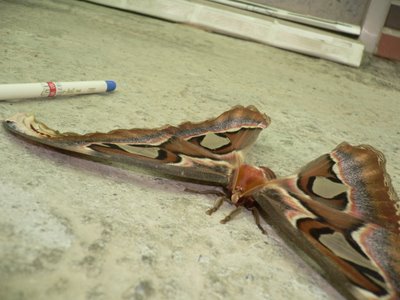I knew that there is a unique character (祂) in Chinese for the third-person pronoun of God, but I only recently came across something distinctive for referring to Satan. (For an interesting discussion about the use of the characters 祂 and 祢 as respectful or honorific ways of referring to God, see the comments section
here.) In the work I was reading, the third-person pronoun 牠, which is normally used to refer to animals, was used throughout the text when referring to Satan. I wondered, is this a unique example of a de-honorific? Not to play the devil's advocate, but was the devil being demoted to a beast? Does this have anything to do with the traditional image of a hoofed Devil with tail and pitchfork?
I checked the most common edition of the Chinese Bible, the Union (和合) version. The Bible is not particularly fond of using third-person pronouns, and Chinese uses them even less than English, so it took a bit of looking to find some examples. The results were not conclusive in showing the beginnings of this usage. This translation does not even use the 祂 character for God, so, as expected, its treatment of Satan is very even-handed. In the temptation of Jesus in the desert, for example, the normal third-person pronoun 他 is used for the Devil. When Satan is characterized as a dragon, the pronoun for animals, 牠 is used.
In a commercial I saw for The Lord of the Rings recently, the Orcs were referred to using the pronoun for animals, 牠. Orc is translated as half-beast person/entity (半獸人), so to translate this as 牠 indicates that there is some room for a value judgment in using the characters 牠 and 他.
How is Satan/the Devil portrayed physically in the Bible? The first instance is the serpent's temptation of Eve. It is later stated that the serpent is Satan/the Devil. Thus, although the humanoid 他 seems like the most logical choice for a third-person pronoun, using the animal form 牠 is a defensible position, even without trying to determine what is the essential form of the Devil.



